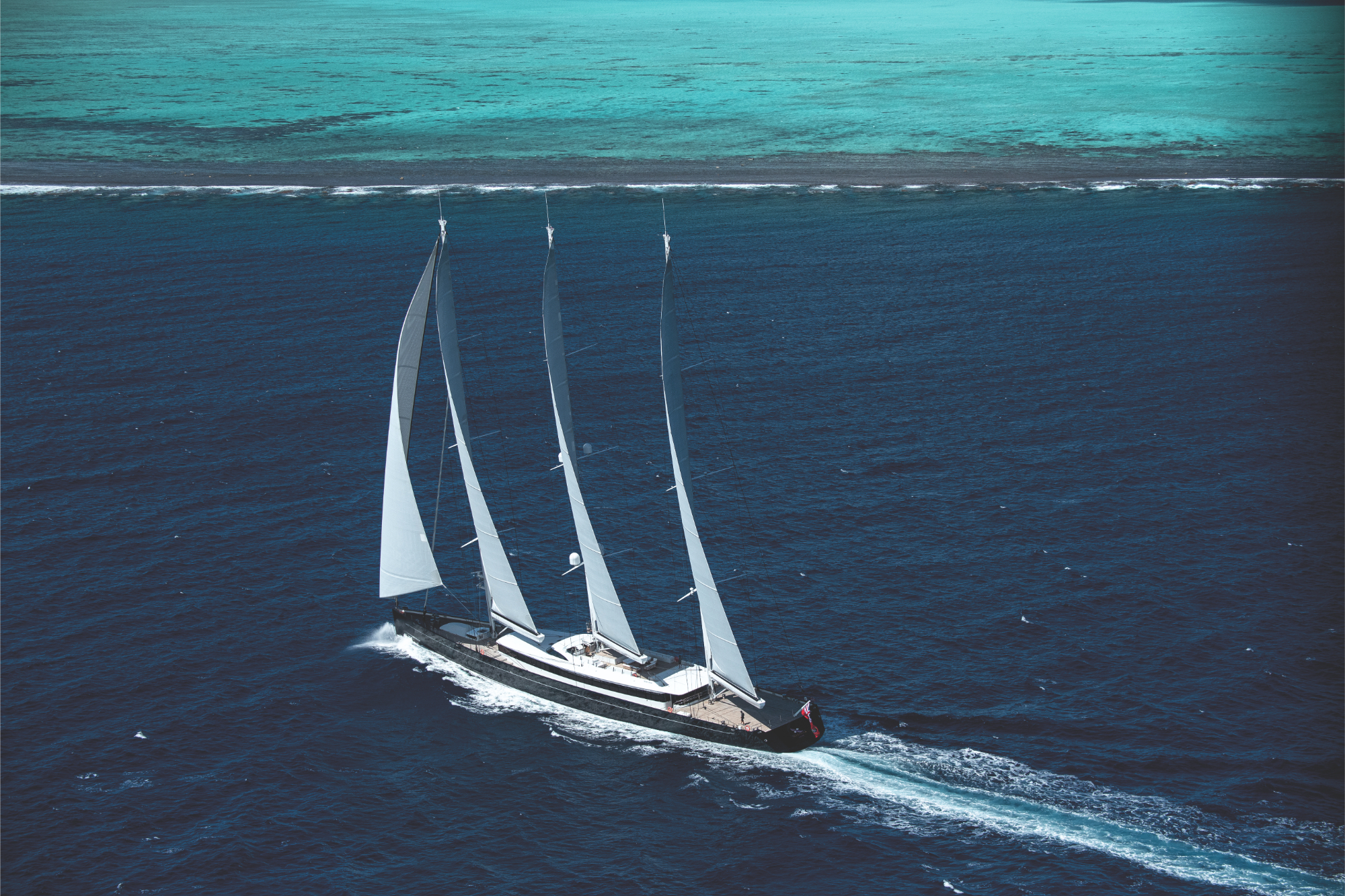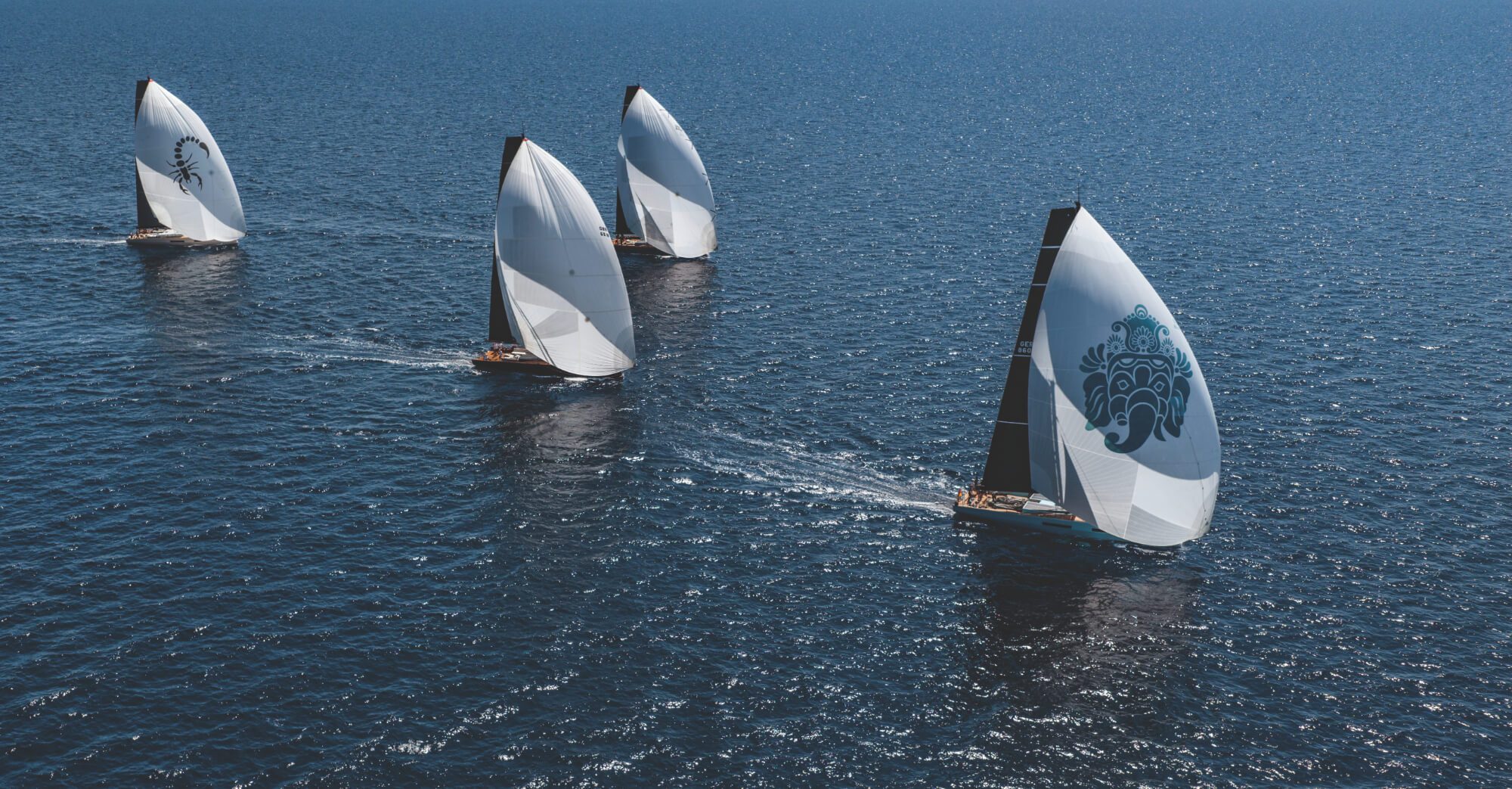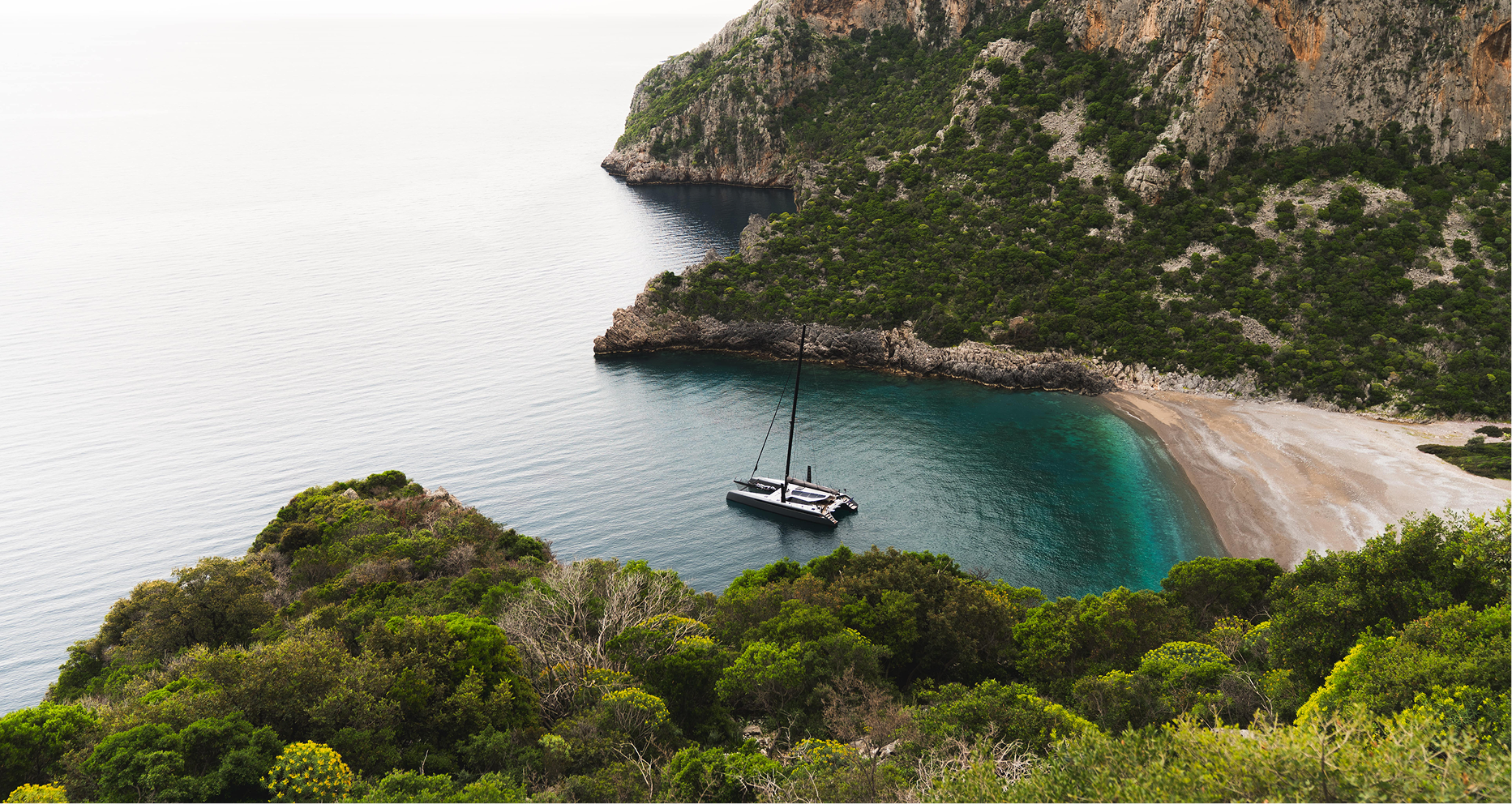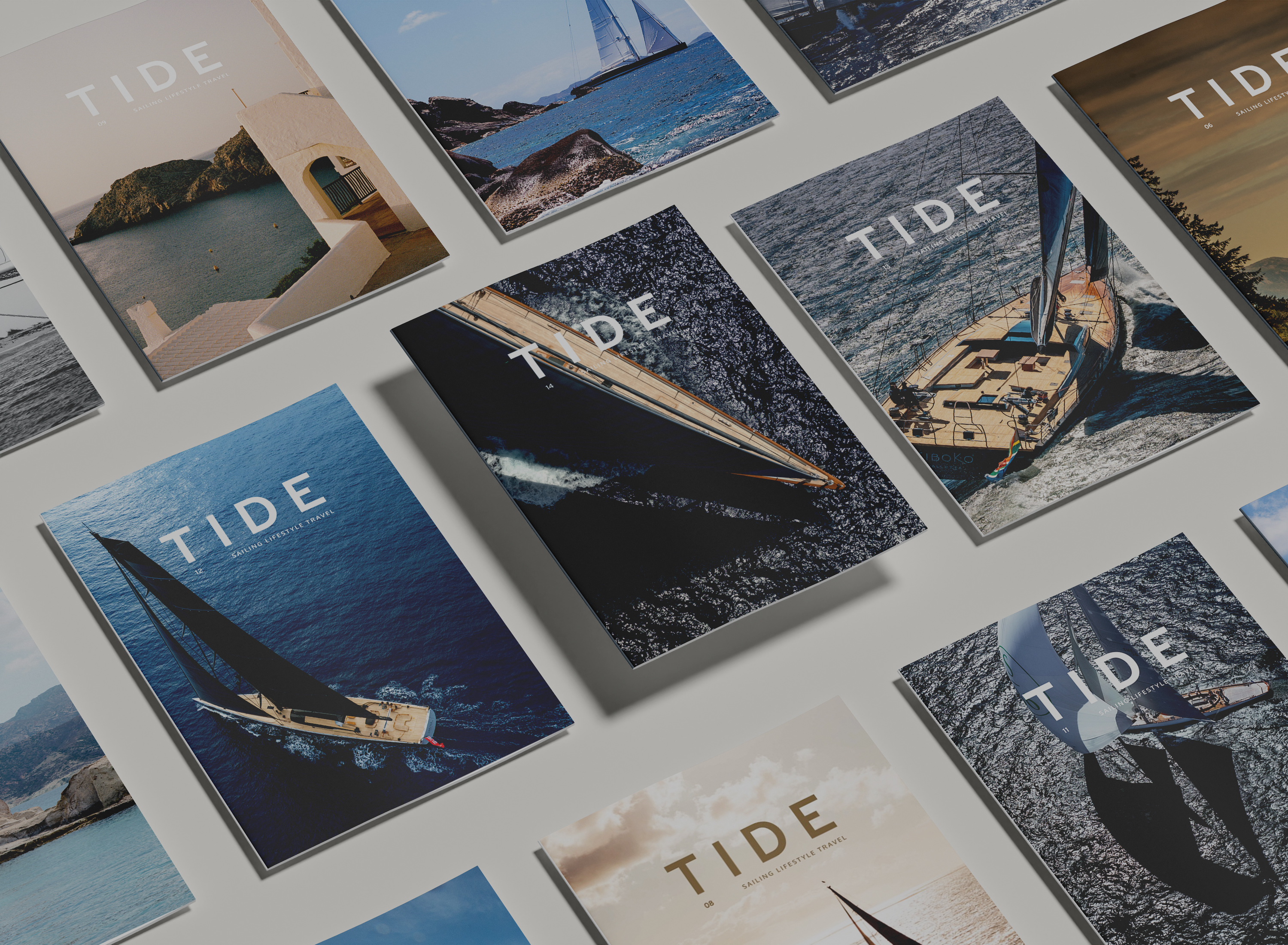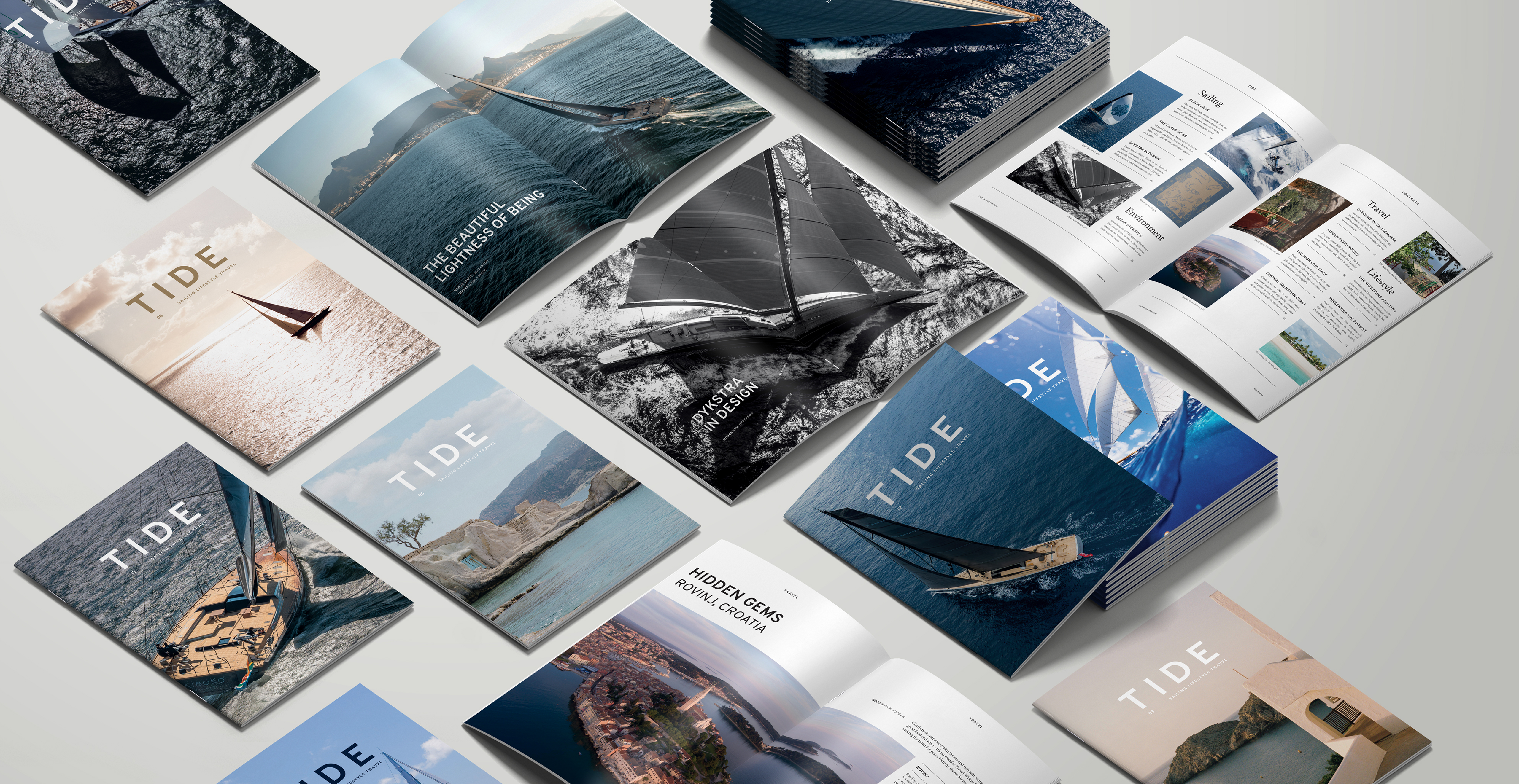That’s already changing, with the advent of ambitious new owners who want to put the yacht through her paces. They’ve spent the winter in the Caribbean and have a programme of refit work to transform her into a family yacht. So, what better opportunity to delve back into the story of this undoubted masterpiece, quietly snuck out under the blanket of lockdown.
Sea Eagle, formerly known as Sea Eagle II, has in fact racked up more than 45,000 sea miles in three years. And though the original owner may have used her more as a floating villa, he was not lacking in yachting experience, having commissioned the 43m sloop Sea Eagle I in 2015 – also from Huisman. So, he knew what he wanted when the time came to upsize.
“Initially, the owner wanted a copy of Athena,” explains Erik Wassen of Dykstra Naval Architects, referring to the famous gaff-rigged schooner. “So, we were full-on working on updating her, making some modifications, because current class requirements need a little more displacement. Then after a while, he decided he wanted a modern boat, not a classic, so we drew a 90m contemporary design.”
In the midst of this process, designer Mark Whiteley was hauled into a meeting at Royal Huisman to give his view on the project. He was actually working on something else, so his involvement was adventitious, but he’d soon put together an outline for a slightly smaller schooner. “The client really liked the modern look and that’s what he went for,” remembers Whiteley. “Sea Eagle I he’d basically bought as a build, so unlike other owners who had come with a dream in mind, he was happy to put the trust in the team once he’d agreed.”
That said, there were some broad requirements that came from the client. He wanted a tender bay accessed from the deck, for instance, not an aft garage. There was simply a hydraulic passerelle aft and sea stairs that slide smoothly out of the hull amidships for tender access. He had no use for a beach club either, so the transom contained a vast storage area. A submarine bay was initially on the wish list, but that fell by the wayside in favour of beautiful, clean lines.
Whiteley’s design sports a vertical bow, heavily raked transom and a flybridge which he has managed to keep miraculously low-profile. “We’re lucky with the length and the reasonably high freeboard to keep it looking sleek overall,” Whiteley says. “It really helps carrying the flybridge quite far aft to give shade. Long sweeping lines keep it low-looking, even with the glass windscreen running around.”
When it came to the interior of the boat, the original owner had some equally unorthodox views. First of all, he planned to enjoy the boat in the company of his male friends, and so all six of the cabins were twin berths rather than the more common doubles. Single beds made the full-beam owners cabin feel rather empty, so in the end, it was divided in two to form a pair of VIP cabins.
Sea Eagle I provided the template for the owner’s simple, unfussy interior styling. “He didn’t really want a Superyacht interior,” says Whiteley. “It had to be warm and inviting, but not overdecorated or showy. He liked to eat with the crew, so the forward saloon had a dining table for at least 14. The crew were all part of his sailing family.”
That was translated into light oak floors, Alpi walnut bulkheads and neutral upholstery. The main saloon has convivial U-shaped seating, with a bar and a large dining area just outside in the aft cockpit. On the other hand, there was real regard for sensible, seamanlike features such as handholds and grabrails for safe passageway through the boat.
With new owners come new priorities and a corresponding programme of light-touch refit work. This was a nearly-new boat, after all, so the work is largely cosmetic. They have reconfigured the outside space, converted some of the twin cabins into doubles and scattered new furniture from brands such as Minotti throughout the boat.
“They have put their own personality into it,” summarises Whiteley. “There’s a whole new seating arrangement on the flybridge, which is based on Twizzle. And the table converts from dining to coffee. Meanwhile, the aft deck has become more of a beach club with new furniture and sun loungers laid out. It’s different from the original concept.”
Captain Mike Douglas continues. “We’ve removed excess handrails from throughout the yacht. She has very clean lines inside, and a simple elegant flow to the design. In addition to the cabin changes, we have been adding art and sculptures to the interior to add character and a personalised touch for her new owners. We’ve also changed out the furniture in the salons to make it fit with the look of the yacht.”
Precious little work to the rig or appendages was needed to prepare the yacht for a sportier second life. From the Pacific to the Mediterranean, she has already proven her mettle under sail. Her rudder alone is a work of technical prowess, being the largest built to date from carbon.
It was unknown territory in terms of stress, but built-in load sensors are constantly gathering data, and it saved nearly 2t of weight at the stern. The three high modulus carbon fibre masts from Rondal lengthen marginally towards the stern, with the mizzen rising 61m above the waterline. They are stayed with Carbo-Link solid stays, and set modern fore-and-aft sails totalling an eyewatering 2,580 square metres upwind, including the three boom-furling mainsails and two headsails.
Downwind, that total balloons to 3,552 square metres, with the addition of the main and mizzen staysails, while there are plans for a 1,400 square metre asymmetric spinnaker. “The owner never intended to set the kite, so we never considered it,” says Wassen. “But the masts have been checked to be strong enough, so there’s no reason to believe that we can’t do it. There’s a towing point on the bow – a ferrule with an 80mm diameter that can take a tack line.”
Feedback from the crew suggests that it’s worth raising sail in winds of 6 knots or more, and that the boat will exceed true wind speed up to around 14 knots upwind. Being a schooner, though, she is not very close-winded. “It’s always hard to point, because the first mast spoils the wind for the second, which spoils it for the third. But she can manage 105-degree tacking angles,” explains Wassen. “As soon as you crack the sheets, it’s something else. They had the yankee, a reefed fore and a reefed main mast, sailing 20-22 knots, exceeding
20 knots quite often.”
Captain Douglas joined the ship in January after a spell on the 67m Alloy ketch Vertigo, and he agrees wholeheartedly about the yacht’s performance. “She’s very impressive under sail,” he says. “She handles beautifully and rides the waves very smoothly. The boat arrives at speeds you don’t expect. Leaving Antigua in 18-20kt of breeze, we bore away and were doing 15-16kt easily without a lot of crew interaction or trimming. True windspeed minus one knot is standard for us.”
After a winter navigating the waters between Antigua and Barbados, including an epic three-week charter, Sea Eagle has landed briefly on this side of the Pond to continue her refit programme at STP in Palma. But she will soon be taking to the thermals for a summer in Scandinavia and after that, the sky’s the limit.
“There’s definite talk about racing,” confirms Captain Douglas. “But we’re still investigating how we can go from her current set up to a racing one, because it was never planned at build. We’ll probably do a bit of offshore racing – the 600s; and big Superyacht regattas designed for the larger yachts, like the Bucket. Being 81m LOA, she cracks on very well.”


